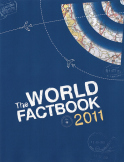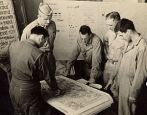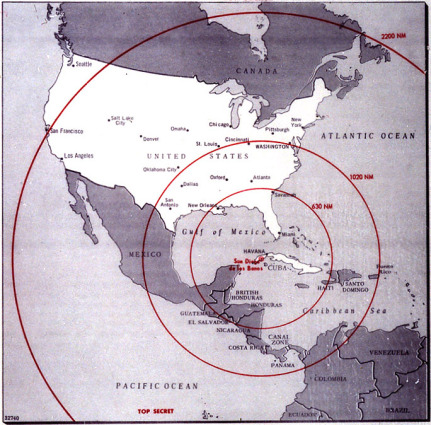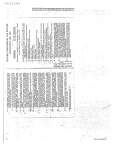Guest blogger, GPO Public Relations Specialist Emma Wojtowicz, reviews a publication with an inside look at intelligence and the end of the Cold War:
 In this election year, President Ronald Reagan has been mentioned by Democrats and Republicans alike regarding his stance on tax policy. However, another association is the Cold War and President Reagan’s famous declaration about the Berlin Wall, “Mr. Gorbachev, tear down this wall!”
In this election year, President Ronald Reagan has been mentioned by Democrats and Republicans alike regarding his stance on tax policy. However, another association is the Cold War and President Reagan’s famous declaration about the Berlin Wall, “Mr. Gorbachev, tear down this wall!”
Ronald Reagan, Intelligence and the End of the Cold War is a multimedia book and DVD recently published in November 2011 by the Ronald Reagan Presidential Library and the Historical Collections at the Central Intelligence Agency. It shares declassified documents from latter years of the Cold War with a focus on relations between General Secretary of the Soviet Union Mikhail Gorbachev and the Reagan administration.
Declassified documents are the primary focus of the book, but there is also an introduction and brief overview on intelligence, including President Reagan’s experience with the intelligence community prior to his presidency and his approach to intelligence as president; the role the intelligence community played in monitoring and anticipating the collapse of the Soviet Union; and expectations the public should have of the intelligence community.
Ronald Reagan, Intelligence and the End of the Cold War poses the question, “Should the U.S. intelligence community have done a better job foreseeing the collapse of the Soviet Union?” It does not answer the question for you, rather puts the subject of intelligence in context and provides declassified documents so readers can decide for themselves.
The book itself only contains a handful of declassified documents, but it comes with a DVD where readers have access to more than 200 declassified documents as well as photos from President Reagan’s administration, videos of press conferences and summits between the U.S. and Soviet Union, and an interactive timeline of the Cold War during the Reagan administration. The content of the book is also available on the DVD.
Image: Ronald Reagan Cold War timeline. Source: Ronald Reagan, Intelligence and the End of the Cold War (CLICK TO ENLARGE)
Highlights of the collection include video briefings for the Reagan Administration produced by the CIA’s Directorate of Intelligence on such topics as the Soviet space program, the Andropov succession, the Chernobyl disaster, and the Soviet media portrait of America. These briefings represent the first time the Agency used videos on a regular basis to deliver intelligence to policymakers. The entire collection marks the first substantial release of such historical material.
The amount of available declassified documents is a bit overwhelming. The content falls across a wide range of topics with a substantial focus on nuclear weapons and disarmament, but what is more interesting are the analyses of the Soviet Union’s politics and leaders, economy, society, labor force, relationship with satellite countries, energy policy, and foreign policy.
One example is a memo on civil unrest in the Soviet Union that analyzes the number of instances of strikes, demonstrations, and riots, where they occurred, and the cause – each individual instance is thoroughly recorded. Another is on the volatile leadership situation in the USSR.
Image: Declassified CIA memorandum on the volatile leadership situation in the USSR; September 27, 1988. Source: Ronald Reagan, Intelligence and the End of the Cold War
A particularly popular topic among the documents is Mikhail Gorbachev, both the man and the leader. Many documents focus on Gorbachev’s personality, goals and strategy of implanting his goals, the way he is perceived by citizens and other communist leaders, and his impact on the Soviet Union. It is clear from the documents that Gorbachev was viewed by the Reagan administration as a capable leader, who understood the problems the Soviet Union was facing, and had the potential to turn the Soviet Union around.
Image: Cover letter to President Ronald Reagan by William Casey of the recently declassified CIA assessment of Mikhail Gorbachev after this first 100 days in office. Source: Ronald Reagan, Intelligence and the End of the Cold War
An insightful comment is made in the introduction, “Deep down, officials seem to want intelligence to make decisions for them, when, in reality, it rarely can.”
This sentiment is reflected in the declassified documents– they provide a wealth of information that is deeply analytical, but they do not spell out the best plans or policies for dealing with the Soviet Union or determine when it will cease to exist.
HOW DO I OBTAIN THIS “Ronald Reagan, Intelligence and the End of the Cold War”?
- Buy it online 24/7 at GPO’s Online Bookstore.
- Buy it at GPO’s retail bookstore at 710 North Capitol Street NW, Washington, DC 20401, open Monday-Friday, 9am to 4pm, except Federal holidays, (202) 512-0132.
- Find it in a library.






 Posted by GPOBookstore
Posted by GPOBookstore 






